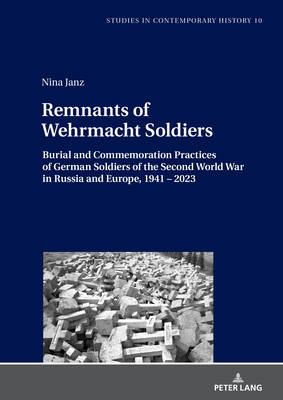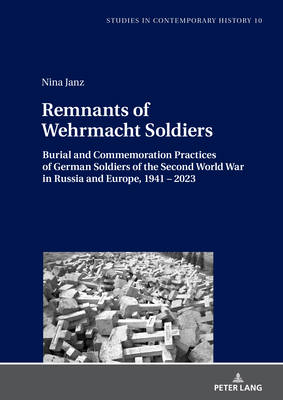
- Retrait gratuit dans votre magasin Club
- 7.000.000 titres dans notre catalogue
- Payer en toute sécurité
- Toujours un magasin près de chez vous
- Retrait gratuit dans votre magasin Club
- 7.000.0000 titres dans notre catalogue
- Payer en toute sécurité
- Toujours un magasin près de chez vous
Remnants of Wehrmacht Soldiers
Burial and Commemoration Practices of German Soldiers of the Second World War in Russia and Europe, 1941 - 2023
Nina JanzDescription
Today, fallen soldiers of the Second World War find their resting places across the globe. While many nations openly honor their military, Germany maintains a more reserved approach to its war dead. During the war, fallen soldiers were hailed as heroes, but after 1945, the treatment of the deceased and their graves underwent a profound transformation. Janz, focusing on the Eastern Front during wartime and then the post-war Soviet Union and Russian Federation, explores this transformation through three key moments: 1. the treatment of the bodies, burial practices, and exhumations; 2. the burial sites, including cemetery construction and design; and 3. the realm of commemoration, encompassing memorial ceremonies and rituals. These rituals evolved from the hero worship of Hitler's Wehrmacht to the mourning and reconciliation policies of the post-war West German government with Russia. This study offers an examination of the German military dead amidst controversies surrounding Wehrmacht soldiers and their challenging commemoration in the present day.
Spécifications
Parties prenantes
- Auteur(s) :
- Editeur:
Contenu
- Nombre de pages :
- 268
- Langue:
- Anglais
- Collection :
- Tome:
- n° 10
Caractéristiques
- EAN:
- 9783631866924
- Date de parution :
- 07-03-24
- Format:
- Livre relié
- Format numérique:
- Ongenaaid / garenloos gebonden
- Dimensions :
- 148 mm x 210 mm
- Poids :
- 503 g

Les avis
Nous publions uniquement les avis qui respectent les conditions requises. Consultez nos conditions pour les avis.






